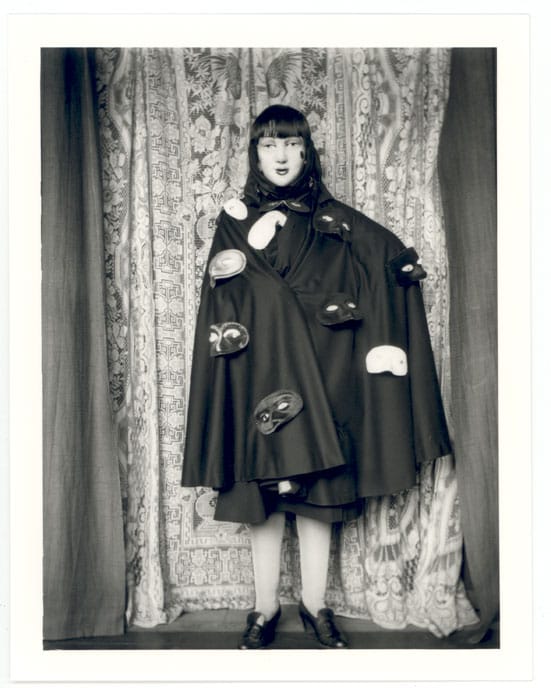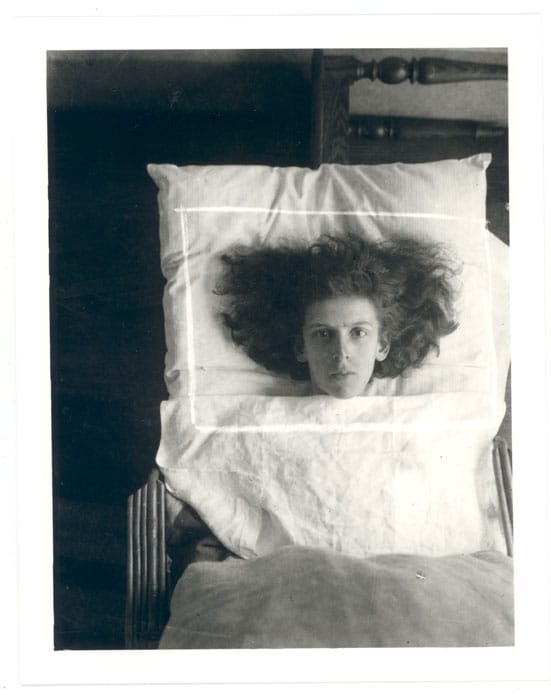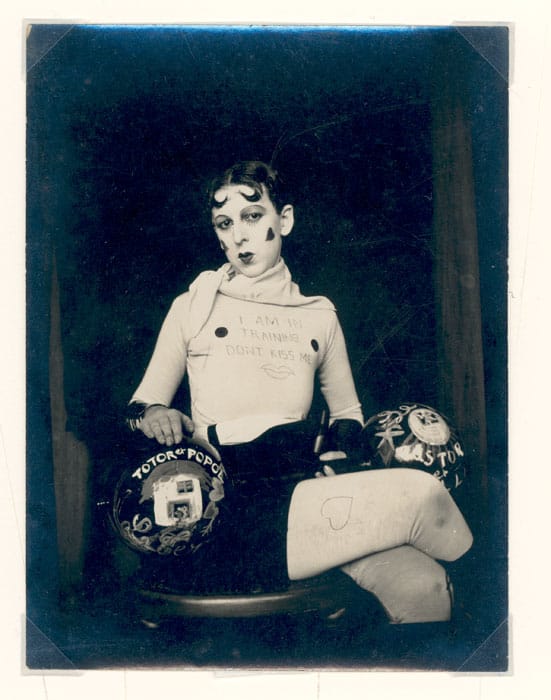Claude Cahun Inverleith House, Royal Botanic Garden Edinburgh
27 Feb - 17 April 2011 extended until 25 April
On this rare opportunity to come face to face with the remarkable, iconic photographs of this provocative early 20th Century artist, the thing that strikes one most is just how incredibly small these monumental works of art actually are. Often measuring no more than 5x3", this collection of some 50 prints charts the artistic life of Cahun (and her largely forgotten lifelong collaborator and partner Marcel Moore) and the myriad personas satirically conceived and adopted by them in their confronting explorations of gender roles and social conventions in Europe in the 1920s and 30s .
Simultaneously playful and subversive, these familiar images are almost too modern for their time; categorically refusing to conform to established notions of femininity, masculinity and identity, and using masquerade and humour to de-stabalise and provoke early 20th century preconceptions of how one should present oneself. The gaze of Cahun is always direct and challenging, confronting the viewer with a look which often implies 'Yeah, this is who I am, so what?'. But who exactly is Cahun? Is she the antagonistic Fascist-looking skinhead staring at us defiantly over her shoulder, or the cute marionette with painted face who coyly poses for you? Is she the crumpled doll-child sleeping in the cupboard with her limp arm hanging down, or the comedic weightlifter in the 'Don't kiss me, I'm in training' T-shirt, or perhaps the androgynous Dandy figure in suit and tie looking out at us with pride at his (her) deliberate otherness? Maybe she is all of these things and yet not wholly any of them, for in truth our identity is never really fixed and yet it is so often imposed on us by society, religion, geography, the age in which we live; impositions that Cahun (née Lucy Renée Mathilde Schwob) seems to wholeheartedly reject. Her irreverence is what makes these images so striking, and though they may indeed come in small packages, they sure do pack a mean punch.
The later photographs showing Cahun and Moores' seemingly idyllic life in Jersey; far removed from their famous and infamous Parisian circle of friends and fellow artists, still play out many of these staged identities and gender complexities, but they are much gentler in their form and effect. Mostly staged outside amongst Romantic graveyards and sea-views, they are softer and with an element of self-mockery that was not present in the earlier incarnations. There is the mature Dandy, complete with smoking jacket and hound who poses wryly against a rural backdrop; the mischievous naked imp, clinging to a rock face; or the naked, lashed Muse figure lying abandoned on the beach, but these have somewhat lost the force and vigour of the earlier portraits.
The subtleties of these later images however mask the dark reality of the times, where the encroaching war led to the Nazi invasion of Jersey in 1940 and the final great stance of Resistance by the islands' reclusive but much loved eccentric 'sisters'. This last chapter of the exhibition is played out in the basement of Inverleith House, where a few of the more biographical photos and a short video reveal the mischievous antics of the couple before they were captured and imprisoned for their 'perverse' lifestyle and their antagonistic anti-war propaganda. Personally, I could have done without the cheesy vignettes of modern day actresses flouncing about pretending to be Cahun and Moore staging their infamous portraits, but there were a few amusing anecdote from the local inhabitants telling of how the couple sought to entice the Nazi soldiers to rebel by hiding anonymous anti-war tracts in cigarette packs, and writing satirical comments on cardboard crosses attached to Nazi officers' graves in the cemetery next to their house (not to mention the classic image of Cahun prancing around the same graveyard dressed like some ancient mythic goddess on a misty morn). These escapades reveal the mischievous humour, defiance and deliberate provocation which was so evident in the early portraits and they serve to seal the couple in my mind as a unique, witty and brave entity of their time: 'This is who we are, so what?'.
Caroline Darke

Claude Cahun
Untitled, 1939
silver gelatin print
Jersey Heritage Trust.

Claude Cahun
Untitled, 1927
silver gelatin print
Jersey Heritage Trust.

Claude Cahun
Untitled, 1914
silver gelatin print
Jersey Heritage Trust.

Claude Cahun
Untitled, 1928
silver gelatin print
Jersey Heritage Trust.